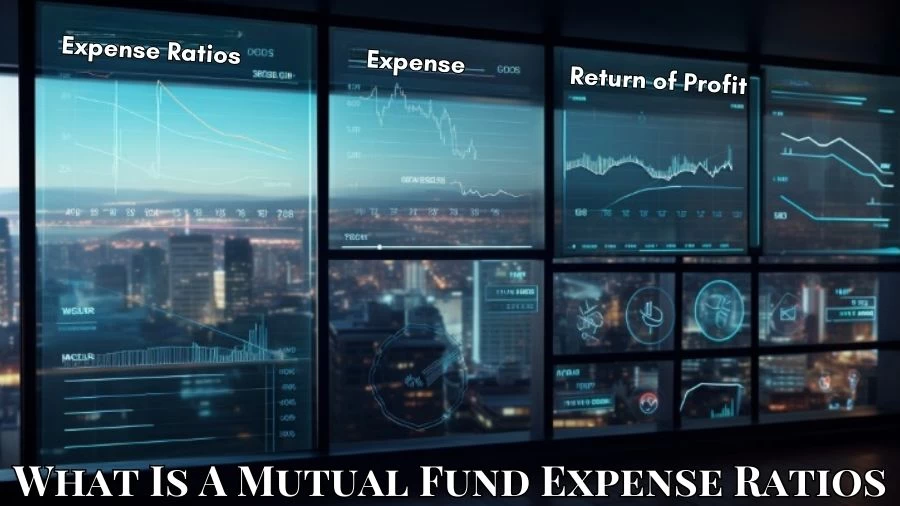
What is a Mutual Fund Expense Ratios?
A mutual fund expense ratio reflects the costs of fund management, affecting investor returns and choices between active and index funds.
by Sai V
Published Aug 24, 2023 | Updated Aug 24, 2023 | 📖 9 min read
On This Page
- What is a Mutual Fund Expense Ratio?
- What is a Good Expense Ratio for a Mutual Fund?
- Mutual Fund Expense Ratio Formula
- What are the Constituents of an Expense Ratio?
- What is the Significance of Mutual Fund Expense Ratios?
- How Do Expense Ratios Operate?
- What Frequency are Expense Ratios Incurred?
- What is the Method for Discovering a Fund's Expense Ratio?
What is a Mutual Fund Expense Ratio?
A mutual fund expense ratio encapsulates the costs associated with managing a mutual fund or an exchange-traded fund (ETF), making it a vital metric for investors to gauge the financial implications of their investments. These ratios encompass a range of expenses tied to fund operations, including asset management fees, administrative charges, compliance-related costs, and fixed overhead expenditures.
Additionally, marketing fees assessed under SEC Rule 12b-1 are factored into this ratio, expressed annually, although investors feel the weight of these expenses continuously rather than at fixed intervals. It's worth noting that certain fund expenses may not be incorporated within the expense ratio figure. The mutual fund expense ratio serves as a compass guiding investors toward a clearer understanding of the annual fees they'll incur.
To illustrate, an expense ratio of 1% signifies that for every $1,000 invested in the fund, $10 will be drawn from the investment to cover costs. However, this deduction won't be explicitly visible on the investor's statement. Instead, it's discreetly deducted from the fund's assets, leading to a reduction in the net asset value (NAV) of the fund's shares.
In instances where companies disclose both gross and net expense ratios, the former encompasses all costs prior to any fee waivers, while the latter reflects the adjusted figure post fee waivers granted by the management company. Generally, a lower expense ratio is advantageous for investors, as it diminishes the portion of returns absorbed by fees. This aspect is especially crucial over extended investment horizons, as costs can accumulate and erode potential gains.
Actively managed funds typically exhibit higher expense ratios due to elevated management fees, whereas index funds, characterized by minimal management requirements, offer lower fees—often considerably lower, with some index funds levying 0.1% or even less.
What is a Good Expense Ratio for a Mutual Fund?
The determination of a favorable expense ratio for a mutual fund hinges on several factors. For investors, an expense ratio that hovers between 0.5% and 0.75% is generally perceived as advantageous for a portfolio that is actively managed. Conversely, if the expense ratio surpasses 1.5%, it is regarded as being on the higher side. Discrepancies in expense ratios between mutual funds and exchange-traded funds (ETFs) stem from their distinct management methodologies.
ETFs, typically characterized by passive management, replicate the holdings of specific indices like the S&P 500, with infrequent adjustments. In contrast, mutual funds employ active management strategies, necessitating constant monitoring and adjustments to enhance fund performance. This dichotomy in management approaches results in relatively higher expense ratios for mutual funds as compared to ETFs.
The resource-intensive nature of actively managing mutual fund assets contributes to these relatively elevated expense ratios. Generally, actively managed mutual funds exhibit expense ratios ranging from 0.5% to 1.0%, with rare instances exceeding 2.5%. Conversely, passive index funds, including ETFs, tend to feature lower expense ratios, typically around 0.2%.
Mutual Fund Expense Ratio Formula
Understanding the Concept:
The mutual fund expense ratio is a crucial measure in the world of investing, particularly for mutual funds. It reveals the proportion of a fund's assets that are utilized to cover various operational and administrative costs. These costs include management fees, advertising expenses, administrative charges, and other essential operational expenditures.
Impact on Investor Returns:
Investors who are considering investing in a mutual fund need to grasp the significance of the expense ratio. This ratio has a direct impact on the returns investors receive from their investment. Before the final returns are distributed to investors, the expense ratio is subtracted from the gross return of the fund. Essentially, it indicates the portion of the earnings that goes towards the fund's operational costs and compensating the fund manager.
The Calculation Process:
The expense ratio is determined through a straightforward calculation. To begin, the total annual operating expenses of the fund are divided by the average value of the fund's assets under management (AUM) over a specific period.
The Formula:
Mathematically, the formula for the mutual fund expense ratio is as follows:
Expense Ratio = Total Annual Operating Expenses ÷ Average Fund Assets
Numerical Illustration:
Imagine a scenario where a mutual fund has incurred $2 million in operating expenses over a year. Simultaneously, the fund has managed an average of $200 million in assets during that year.
Putting the Formula to Work:
By applying the formula, we calculate the expense ratio:
Expense Ratio = $2 million ÷ $200 million = 0.01, which translates to 1.0%
In this instance, the resulting expense ratio of 1.0% signifies that 1.0% of the mutual fund's total assets are utilized to cover operational costs. The remaining 99.0% represents the potential investment returns available to investors.
Considering Investment Choices:
When investors are evaluating different investment options, it's essential to take into account not only the potential returns each option offers but also the associated expenses. A higher expense ratio can eat into an investor's overall returns, making it crucial to strike a balance between potential gains and the costs incurred.
What are the Constituents of an Expense Ratio?
The components comprising an expense ratio primarily involve variable expenditures within a fund, yet these dynamic costs remain consistent relative to the fund itself. For instance, a fee equivalent to 0.5% of the fund's total assets will invariably retain its 0.5% proportion regardless of any fluctuations.
Furthermore, alongside the managerial fees associated with a fund, certain funds incorporate an advertising and promotional outlay referred to as a 12b-1 fee, which is integrated into operational costs. Notably, these 12b-1 fees embedded within a fund are constrained from exceeding 1% (comprising 0.75% designated for distribution and 0.25% for shareholder servicing) in adherence to regulations set forth by FINRA (Financial Industry Regulatory Authority).
Conversely, a fund's trading activities encompassing the purchase and sale of portfolio securities are excluded from the calculation of the expense ratio. Additional costs not encompassed within operational expenses encompass loads, contingent deferred sales charges (CDSC), and redemption fees, which, if pertinent, are directly borne by investors in the fund.
What is the Significance of Mutual Fund Expense Ratios?
Comprehending and contrasting the expense ratios of diverse investment funds stands as a pivotal task for every investor prior to committing to any investment avenue. The fees attached to these funds exhibit considerable variability, and their influence on long-term savings can be profound. Consequently, gaining a comprehensive understanding of the financial landscape before embarking on an investment journey becomes paramount.
While a mutual fund might exhibit commendable returns on its underlying investments, it's imperative to recognize that certain charges or expenses associated with managing the fund could potentially overshadow these gains. In cases where the expense ratio of a mutual fund is notably high, exploring alternative investment options that offer a greater potential for maximizing returns becomes advisable.
Investors gravitate towards funds with lower expense ratios due to their direct correlation with fund performance. Assuming other factors remain constant, a higher expense ratio corresponds to a diminished return. This is crucial as marginal fluctuations in both savings rate and expense ratio can amass over the years, significantly impacting an investor's overall financial portfolio.
For instance, envision a fund generating a 5% annual profit. While an expense ratio of 1% might appear inconsequential, it translates to a fifth of the fund's earnings consistently being diverted towards the fund company's operational expenses. Conversely, a fund sporting a 0.25% expense ratio only surrenders 5% of its earnings.
Consequently, safeguarding one's investment from substantial expense and fee burdens during market fluctuations is imperative to prevent a substantial decline in returns. Continued investment in high-cost funds could potentially lead to considerable long-term monetary losses, further highlighting the critical nature of assessing and comprehending expense ratios before making investment decisions.
How Do Expense Ratios Operate?
Expense ratios function as a mechanism to account for the costs involved in the management of investment funds and to provide compensation to the company overseeing the fund. However, from the investor's perspective, these ratios translate into an expenditure that diminishes the actual returns on their investments.
To illustrate, if a particular fund yields an average annual return of 10%, but carries an expense ratio of 0.50%, the resultant net annual return perceivable by the investor would be 9.50%. This showcases how the incurred expenses, as indicated by the expense ratio, erode the overall investment gains, thereby yielding a reduced net outcome.
What Frequency are Expense Ratios Incurred?
Expense ratios in investment funds are incurred on a daily basis, accumulating incrementally over time. Although expressed as an annual percentage, they are divided down to a daily rate, which is then factored into the daily price or net asset value (NAV) of the fund. This daily reduction covers the costs associated with managing the fund's operations and investments. However, the actual deductions from an investor's holdings usually occur on a monthly basis.
If a fund has an expense ratio of, for instance, 0.24%, the monthly deduction would amount to 0.02% (0.24% divided by 12 months). Despite this frequent accumulation and deduction, the impact is often manageable, as exemplified by a $10,000 investment in which the monthly deduction of $2 would have minimal noticeable effect on the overall balance.
What is the Method for Discovering a Fund's Expense Ratio?
Regulation by the Securities and Exchange Commission (SEC): The SEC mandates that funds, such as mutual funds and ETFs, must disclose their expense ratios in the prospectus. The prospectus is a comprehensive document that provides essential information about the fund, including its investment objectives and the fund managers responsible.
Locating the Expense Ratio: Investors have various avenues to access a fund's expense ratio. If they are using an online brokerage platform, they can typically find this information using the research tools offered by the platform. Additionally, many online brokerages provide tools for comparing different funds, allowing investors to input multiple fund symbols and directly compare their expense ratios and performance metrics.
Differentiating Gross Expense Ratio and Net Expense Ratio: Expense ratios come in two forms: gross and net.
- Gross Expense Ratio: This percentage represents the fee that an investor would be charged for holding the fund's shares without considering any fee waivers or reimbursements. Essentially, it reflects the baseline cost of managing the fund.
- Net Expense Ratio: The net expense ratio is the actual cost that investors will bear to hold the fund's shares. It takes into account any fee waivers or reimbursements that the fund company might provide to attract new investors. This figure provides a more accurate depiction of the actual cost to investors.
Importance for Investors: The expense ratio is a pivotal factor for investors to take into account, as it directly impacts their returns. Funds with lower expense ratios are generally more cost-effective for investors since they allow investors to retain a larger portion of the fund's returns. On the other hand, higher expense ratios can eat into investment gains over time, potentially leading to diminished overall returns.
What is a Mutual Fund Expense Ratios - FAQs
1. What's a mutual fund expense ratio
A mutual fund expense ratio covers management costs and affects investor returns.
2. What's a favorable expense ratio for managed mutual funds?
An expense ratio of 0.5% to 0.75% is good for managed mutual funds.
3. Why do actively managed mutual funds have higher expenses?
Active management leads to higher mutual fund expense ratios.
4. How is a mutual fund's expense ratio calculated?
Divide a mutual fund's annual costs by its average assets for the expense ratio.
5. Why understand mutual fund expense ratios?
These ratios impact returns, making low-expense funds preferable for investors.




